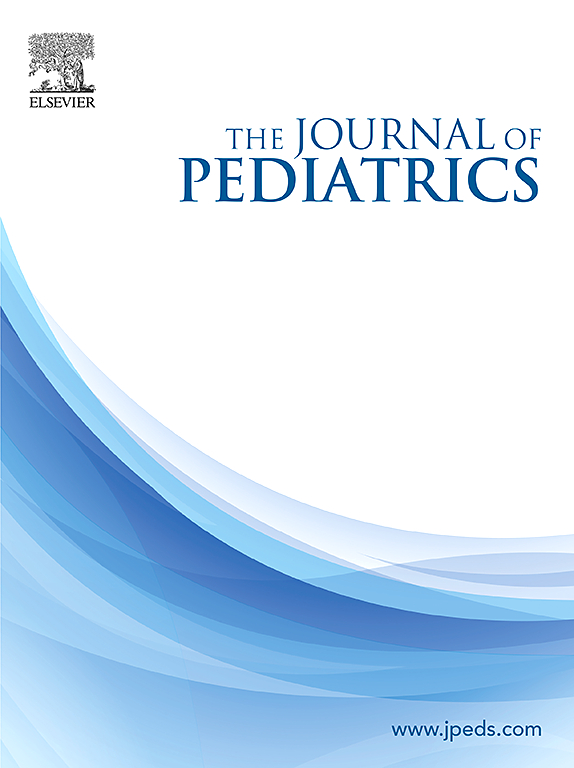Management Variation in Pediatric Labial Adhesions: A Retrospective Cohort Study
IF 3.9
2区 医学
Q1 PEDIATRICS
引用次数: 0
Abstract
Objective
To compare treatment and outcome differences between primary care providers (PCPs), pediatric and adolescent gynecologists (PAGs), and pediatric urologists (PURs) in management of labial adhesions (LAs).
Study design
This was a retrospective, cohort study of patients aged 0 through 21 presenting for a clinic visit from July 2022 to July 2023 at a single institution, identified by International Classification of Diseases 9th revision/10th revision codes for LA. Management variation was analyzed via cross-tabs with chi-square, Fisher exact test, and two-sample t-tests.
Results
The 159 patients meeting inclusion criteria had a median age of 12 months at diagnosis; 81 were managed by a PCP and 78 were referred to a specialist: 41 (52.6%) PUR, 32 (41.0%) PAG, and 5 (6.4%) other specialists. Forty-one patients presented with urinary issues, with no difference in rate of referral to PUR (37.8%), PAG (15.5%), or continued PCP management (46.7%), P = .17. All patients were initially treated nonsurgically. Surgical intervention rates did not differ between PAG and PUR (P = .21). PUR performed sharp adhesiolysis more often than PAG (P = .011), but there was no difference in blunt adhesiolysis rates between PAG and PUR (P = .17). LA recurred postoperatively in 6 (3.8%) patients.
Conclusions
These results reiterate the efficacy of nonsurgical treatment for most patients with LA and illustrate minor variation in LA management between PAG and PUR.
求助全文
约1分钟内获得全文
求助全文
来源期刊

Journal of Pediatrics
医学-小儿科
CiteScore
6.00
自引率
2.00%
发文量
696
审稿时长
31 days
期刊介绍:
The Journal of Pediatrics is an international peer-reviewed journal that advances pediatric research and serves as a practical guide for pediatricians who manage health and diagnose and treat disorders in infants, children, and adolescents. The Journal publishes original work based on standards of excellence and expert review. The Journal seeks to publish high quality original articles that are immediately applicable to practice (basic science, translational research, evidence-based medicine), brief clinical and laboratory case reports, medical progress, expert commentary, grand rounds, insightful editorials, “classic” physical examinations, and novel insights into clinical and academic pediatric medicine related to every aspect of child health. Published monthly since 1932, The Journal of Pediatrics continues to promote the latest developments in pediatric medicine, child health, policy, and advocacy.
Topics covered in The Journal of Pediatrics include, but are not limited to:
General Pediatrics
Pediatric Subspecialties
Adolescent Medicine
Allergy and Immunology
Cardiology
Critical Care Medicine
Developmental-Behavioral Medicine
Endocrinology
Gastroenterology
Hematology-Oncology
Infectious Diseases
Neonatal-Perinatal Medicine
Nephrology
Neurology
Emergency Medicine
Pulmonology
Rheumatology
Genetics
Ethics
Health Service Research
Pediatric Hospitalist Medicine.
 求助内容:
求助内容: 应助结果提醒方式:
应助结果提醒方式:


